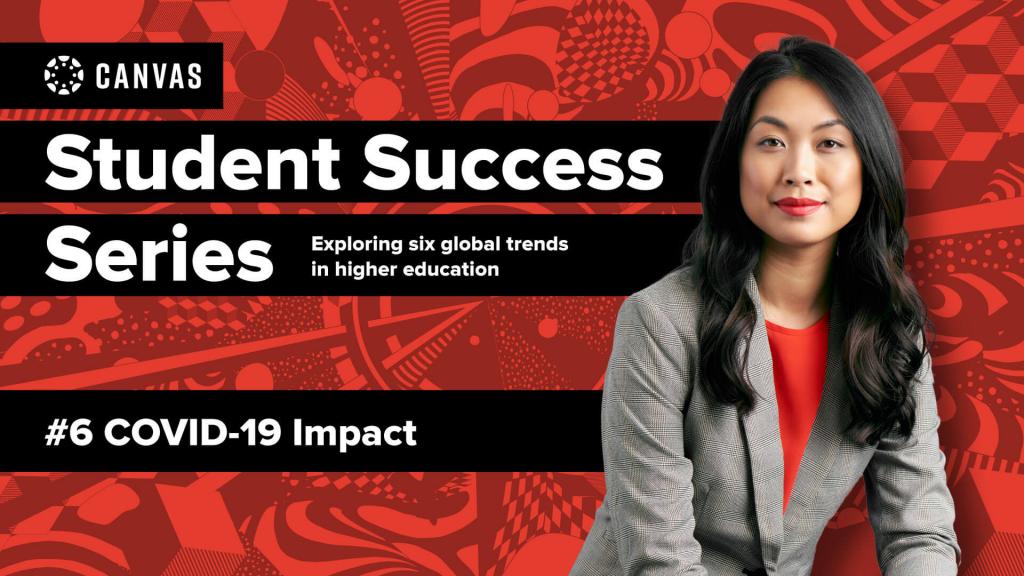After an abrupt transition to online learning during the spring of this year, it soon became clear that getting back to "normal" wouldn’t be happening any time soon, and the seemingly temporary embrace of technology in higher education institutions needed to be replaced with a focus on intentionally designed online learning for the foreseeable future.
Though this shift has made it possible for learning to continue amid the COVID-19 pandemic, it has also presented a myriad of challenges for faculty and students alike. While educators adapted their pedagogies to the technologies at hand, students struggled with the more basic need of accessibility now that the campus computer labs and high-speed WiFi were no longer available. The challenge of keeping students engaged with their instructors as well as their peers has loomed large throughout the return to studies.
Combined, these challenges have prompted institutions to reexamine the term "student success" and what it means to deliver on the expectations of students. And as our wait for a return to normal has turned into acceptance of our new normal, it’s clear that learning will remain virtual for the foreseeable future.
In an effort to address these high stakes in higher education, Instructure conducted a global benchmark study with Hanover Research, The State of Student Success and Engagement, in which 7,070 educators and students in 13 countries were surveyed to identify how they define student success and what they consider to be driving factors of engagement.
Of all the results, the following statistics made it clear: The COVID-19 pandemic has presented institutional leaders with a catalyst for change.
- 85% of students said that COVID-19 was most impacting their ability to succeed.
- 71% of respondents said it has impacted student academic progress.
- 70% of faculty said more students are falling behind on their studies than ever before.
With the expectation that courses will remain online indefinitely, it’s critical for higher education institutions to better understand what students believe they need to be successful and engaged. As I continue to connect with educators and institutional leaders in our Canvas Community, I am amazed at the resilience and creativity they’ve displayed as they evolve to meet these challenges. Below are a few of the ways institutions are adapting to focus on a more holistic approach to student development.
Aligning Course Objectives to Future Careers
Beyond the disruptions in education, the workforce has also experienced a great deal of change, and students want to know that what they're learning in their courses is directly preparing them for their next step. A key finding from our study supports this notion, citing career readiness as the number one priority for students.
“If you had asked me pre-COVID what student success would look like, I would have had a laundry list—here's our course objectives, here's our department objectives, here's the university objectives that we want to accomplish,” explained Dr. Karen Freberg, Associate Professor in Strategic Communication at the University of Louisville, during a recent webinar I hosted.
“But with COVID, what I've realized [...] is that it's not only about knowing the material and understanding their field of study a little bit more. A lot of my students have been asking me how they can apply their learning and bring assignments to life.”
This paradigm shift has presented institutions with the challenge of transferring hands-on learning experiences to an online format that is collaborative and rigorous enough to prepare students for real-world application.
In response to this, we are seeing many institutions using this challenge as an opportunity to connect with local organizations and community partners to provide educational opportunities that align with jobs.
Leading With Empathy in Online Course Design
As students strive to keep up with their courses, it’s important to remember that like many of us, they are balancing multiple roles in their life while also addressing the impact of COVID-19. Now more than ever, educators need to think beyond the lecture and provide flexibility, enabling students to demonstrate mastery of skills in many different ways.
Sean Nufer, an educator at The Chicago School of Professional Psychology and Canvas 2020 Educator of the Year winner, said it best in a recent live stream discussion. “We need to be listening to our students more than ever. We need to be patient with them and recognize that while there is more than one way to teach, there are also multiple ways to learn.”
We see many educators leveraging technology to create a more immersive experience that allows students to discuss and collaborate virtually, rather than watching a one-way video lecture. We’ve also noticed institutions using audio and video tools to give personalized and targeted feedback to individual students, transforming the traditional grading process into another opportunity for connection.
Creating Opportunities for Faculty-Student Engagement
Amid the increasing use of technology today, both students and faculty continue to value the hands-on learning and collaboration that technology simply cannot replace. When asked what factors are considered to be the main drivers of student success, respondents named quality of faculty (88%), technology availability (86%), and hands-on instruction (86%), reinforcing that technology is best used when paired with interactive content and opportunities for connection beyond devices.
Sean Nufer also shared how he prioritizes connecting with students in a fully virtual learning environment: “The community that you have in a traditional classroom is not replicated online. We have to be purposeful in building those connections [...] and those connections are vital, because without that network, what are we? We’re not just repositories of information. What brings education value are the connections we make that last beyond the three credits or 16 weeks.”
It’s becoming clear that the accelerated evolution forced on education will result in changes to instructional delivery that are here to stay. Connecting educators and learners with technology and helping those learners connect with careers is becoming key, not just to the success of students but to the success of colleges and universities themselves. Educators, technologists, instructional designers, and academic leaders alike will continue to come together to forge a pathway to the future, celebrating and supporting each other along the way. That’s what is, and always will be, great about education.
We invite you to review the findings from our study to learn more about the newfound meaning of student success and how institutions can use these challenges as a catalyst for meaningful change.
Related Content
 panda_personality_header_web.jpg
panda_personality_header_web.jpgBlogs
 championed_by_apac_2025.png
championed_by_apac_2025.pngBlogs
 three_pathways_to_assessment_reform.png
three_pathways_to_assessment_reform.pngBlogs
